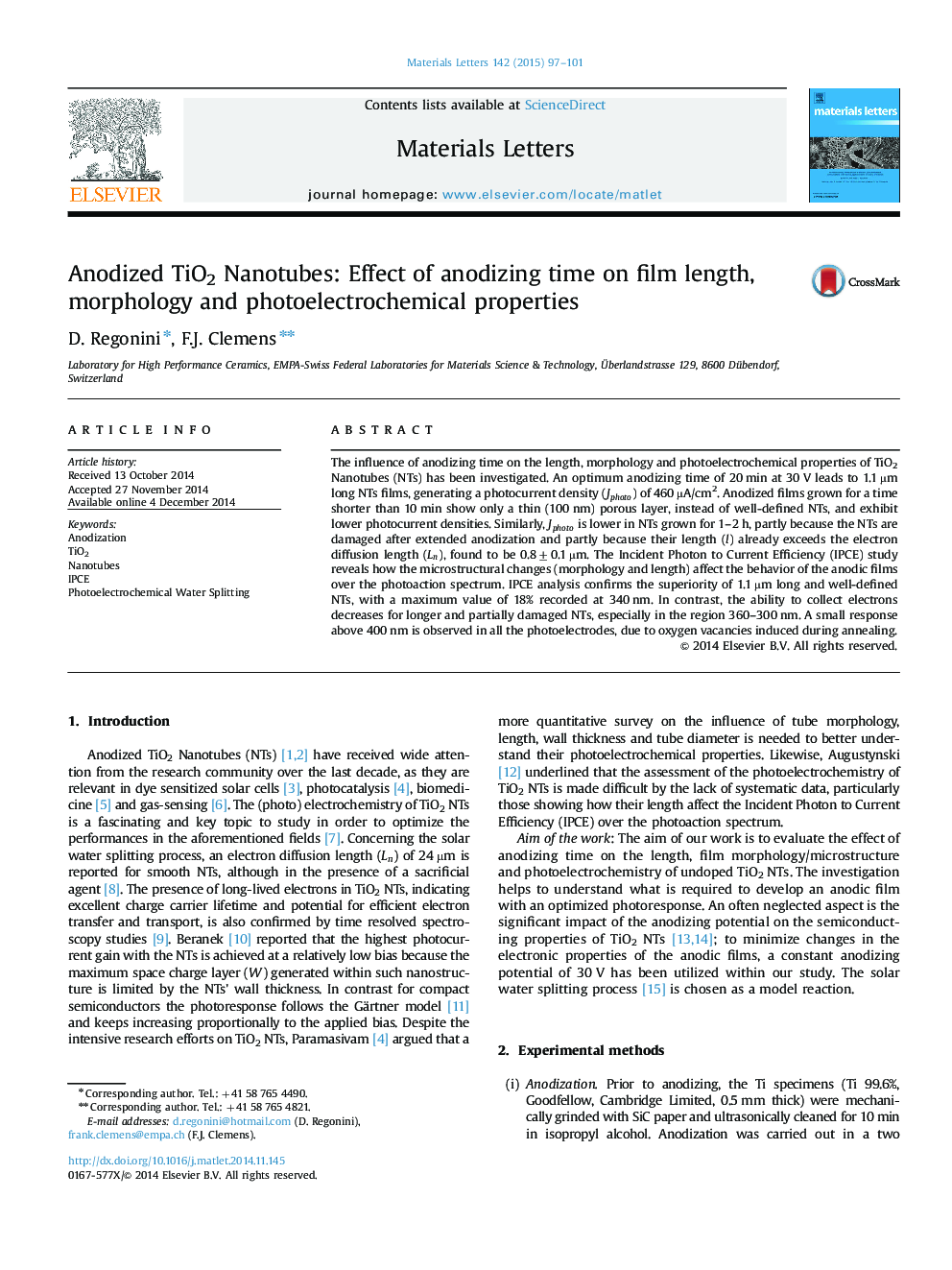| کد مقاله | کد نشریه | سال انتشار | مقاله انگلیسی | نسخه تمام متن |
|---|---|---|---|---|
| 1643282 | 1517246 | 2015 | 5 صفحه PDF | دانلود رایگان |

• Well-defined TiO2 NTs exhibit higher photoresponse than thin porous layers.
• The 1D transport within the NTs is clear from photocurrent measurements.
• An optimal length of 1.1 µm leads to a maximum photoresponse of undoped TiO2 NTs.
• The photo-response of the NTs decreases once the NTs are partially damaged.
• The electron diffusion length of the undoped NTs is estimated to be 0.8±0.1 µm.
The influence of anodizing time on the length, morphology and photoelectrochemical properties of TiO2 Nanotubes (NTs) has been investigated. An optimum anodizing time of 20 min at 30 V leads to 1.1 µm long NTs films, generating a photocurrent density (JphotoJphoto) of 460 µA/cm2. Anodized films grown for a time shorter than 10 min show only a thin (100 nm) porous layer, instead of well-defined NTs, and exhibit lower photocurrent densities. Similarly, JphotoJphoto is lower in NTs grown for 1–2 h, partly because the NTs are damaged after extended anodization and partly because their length (ll) already exceeds the electron diffusion length (LnLn), found to be 0.8±0.1 µm. The Incident Photon to Current Efficiency (IPCE) study reveals how the microstructural changes (morphology and length) affect the behavior of the anodic films over the photoaction spectrum. IPCE analysis confirms the superiority of 1.1 µm long and well-defined NTs, with a maximum value of 18% recorded at 340 nm. In contrast, the ability to collect electrons decreases for longer and partially damaged NTs, especially in the region 360–300 nm. A small response above 400 nm is observed in all the photoelectrodes, due to oxygen vacancies induced during annealing.
Journal: Materials Letters - Volume 142, 1 March 2015, Pages 97–101